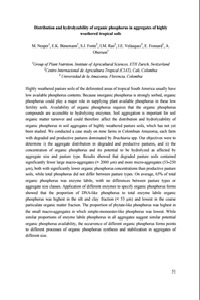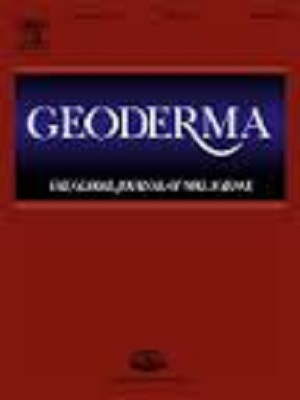Criteria and indicators for assessing the sustainability of forest management: conservation of biodiversity
The need for new criteria and indicators for the assessment of biodiversity conservation as part of sustainable forest management of tropical forests has been identified as a priority by many international organisations. Those biodiversity criteria and indicators which formed part of a much broader initial assessment by the Center for International Forestry Research (CIFOR) (Prabhu et al. 1996) were found to be deficient. This Working Paper contains specific proposals for biodiversity criteria and indicators.
Current issues in non-timber forest products research. Proceedings of the workshop research on NTFP. Hot Spring, Zimbabwe, 28 August - 2 September 1995
This book contains a number of commissioned background papers presented at the workshop on ‘Research on Non-timber Forest Products’ (Hot Springs, Zimbabwe, 28 August - 2 September 1995). Bringing together experiences from different regions and professional backgrounds, the book attempts to analyse the complexity of multiple use of forests from a multidimensional perspective that incorporates environmental, social, economic, technological, political, historical and cultural factors. Current topics of discussion are reviewed.
Definir l'impact du carbone forestier sur les moyens de subsistance des populations locales: possibilites offertes par le mecanisme pour un developpment propre du protocole de Kyoto
Projects implemented as part of the Clean Development Mechanism (CDM) of the Kyoto Protocol will have the dual mandate of reducing greenhouse gas emissions and contributing to sustainable development. It is not yet clear what, if any, forestry activities will be eligible for CDM. Nor is it known what rules will guide the implementation of CDM projects. These decisions have important implications for poor people who live in and around forests in developing countries.
Desentralisasi pengelolaan hutan di Bolivia: siapa yang memperoleh manfaat dan mengapa
Determination of eligible lands for A/R CDM project activities and of priority Districts for project development support in Indonesia
Based on the best available remote sensing data from before 1990, the total area of formally eligible lands in Indonesia for the aff orestation and reforestation (A/R) Clean Development Mechanism (CDM) activities under the Kyoto protocol is about 46 M ha.
Developing community-based forest enterprises in Nepal
Developing community-based forest enterprises (CBFEs) is an ideal development intervention in poor forest communities as they have the potential to generate income and employment for the poor while supporting sustainable management of forest resources. This potential is limited by various constraints, many of which are unique to forestbased enterprises.
Developing forest-based enterprises in Meghalaya
With around half of its land area still forested, Meghalaya – one of the eight states of Northeastern India - has high potential for the development of forest-based enterprises. There are, however, various constraints to the development of forest-based enterprises as demonstrated by the noticeable underdevelopment of industries in the state and the dearth of information regarding the status of existing forest-based industries - an important element to guiding targeted interventions.
Effects of land cover on ecosystem services in Tanzania: a spatial assessment of soil organic carbon
El aprovechamiento de madera en las concesiones castañeras (Bertholletia excelsa) en Madre de Dios, Perú: un análisis de su situación normativa.
El objetivo de este documento es evaluar la situación normativa del aprovechamiento de madera en las concesiones castañeras de Madre de Dios desde el año 2004, cuando se publicó la norma con carácter de complementariedad que permitió esta actividad y hasta la zafra concluída para el año 2010. Para este fin se analizaron las cifras oficiales de volúmenes extraídos de madera tanto en concesiones castañeras y en concesiones madereras dentro de las Administraciones Técnicas de Tahuamanu y Tambopata-Manu.



